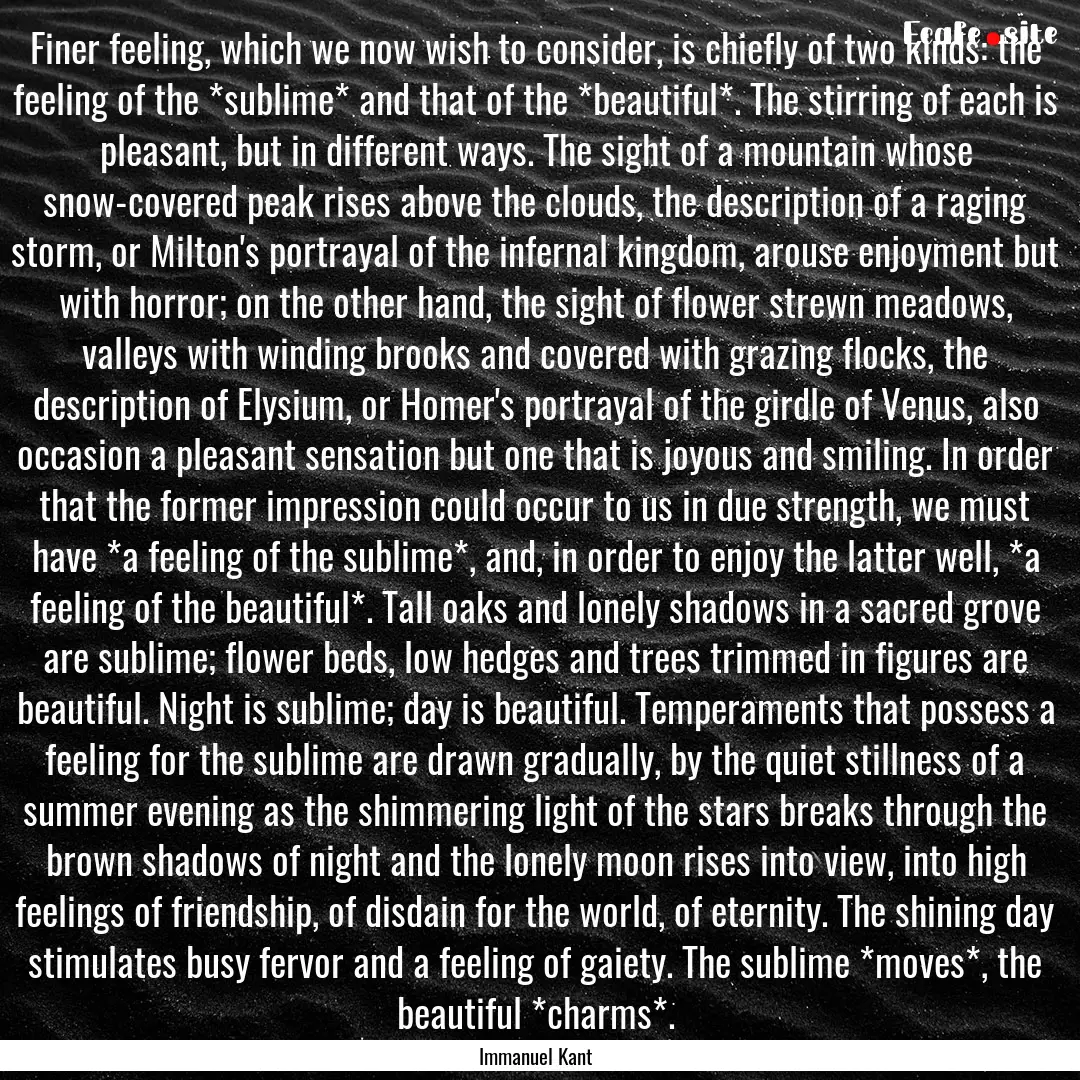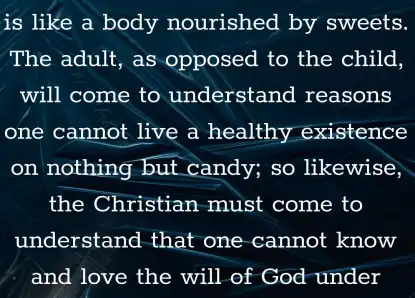
Report, if you have a problem with this page“ Finer feeling, which we now wish to consider, is chiefly of two kinds: the feeling of the *sublime* and that of the *beautiful*. The stirring of each is pleasant, but in different ways. The sight of a mountain whose snow-covered peak rises above the clouds, the description of a raging storm, or Milton's portrayal of the infernal kingdom, arouse enjoyment but with horror; on the other hand, the sight of flower strewn meadows, valleys with winding brooks and covered with grazing flocks, the description of Elysium, or Homer's portrayal of the girdle of Venus, also occasion a pleasant sensation but one that is joyous and smiling. In order that the former impression could occur to us in due strength, we must have *a feeling of the sublime*, and, in order to enjoy the latter well, *a feeling of the beautiful*. Tall oaks and lonely shadows in a sacred grove are sublime; flower beds, low hedges and trees trimmed in figures are beautiful. Night is sublime; day is beautiful. Temperaments that possess a feeling for the sublime are drawn gradually, by the quiet stillness of a summer evening as the shimmering light of the stars breaks through the brown shadows of night and the lonely moon rises into view, into high feelings of friendship, of disdain for the world, of eternity. The shining day stimulates busy fervor and a feeling of gaiety. The sublime *moves*, the beautiful *charms*. ”

Immanuel Kant
From : Observations on the Feeling of the Beautiful and Sublime



